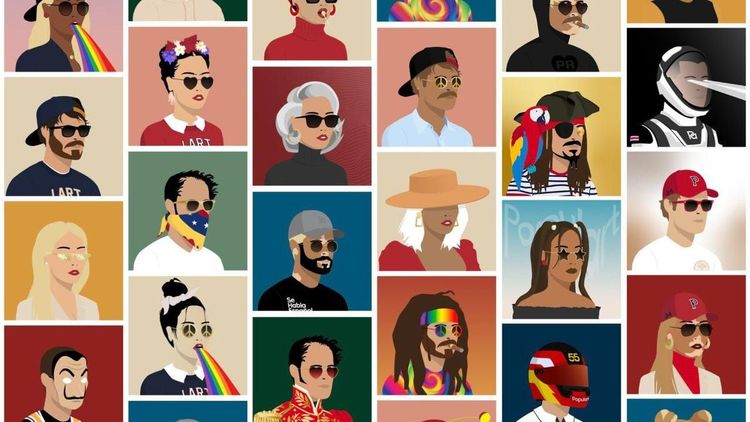
Blockchain in Colombia: Equalizing Economic Force?
Latin America is one of the leading regions the world in ownership of NFTs (Non Fungible Tokens) and many of the innovators of this movement are women. NFTs are attractive for many in Latin America because they are seen as affordable investments that provide utilities to their owners while hedging against inflation and volatile market conditions. And Colombia provides a prime example of this new economic direction. “Blockchain and cryptocurrencies have been seen as an alternative to protecting wealth,” said Economist Carolina Cifuentes. “Latin American economies see their local fiat currencies depreciate at a faster rate than anywhere else in the world. We've seen this in Argentina, Venezuela, and Colombia.” “It is estimated that more than 3 million people in Colombia own cryptocurrencies. It is likely that this figure is underestimated since a large amount of these transactions can be anonymous,” said Cifuentes. “According to the last research conducted by Finder, 8% of Colombian adults with access to the internet own an NFT.” Blockchain development is being supported by local banks and governments, the most famous example being El Salvador accepting Bitcoin as a legal currency. Cifuentes also argued against a misconception common in developed countries that costs of NFTs and Cryptocurrency can be a barrier to entry in Latin America as there are many options at lower price points, that of Populart being an example. It is also a way for artists to gain traction for their art outside of their home countries, something difficult without access to major galleries and museums. A bit of the Popularte Collection of NFTs that celebrate Latino culture and trailblazers. Courtesy of PopulartPopularte is an NFT collection that seeks to give more relevance to Hispanic talent and culture on the web3 and NFT spaces. Populart is a minimalist pop art collection with 5454 unique NFTs.
Populart highlights the talent and character of the Hispanic culture through its more than 400 elements (traits) that bring the NFT collection to life. Its founding was a family affair Annabel Rondón, Victor Rondón, Victoria Rondón, Kiany Mora and Carlos Mijares are all related by birth or marriage and they claim that they are able to work together by separating family and work life. The Palnequera is a traditional folk figure in Colombia who inspired one NFT in Populart. Art by Victor RodonIn 2016 this family purchased machines to mine bitcoin and since then have been interested in using the blockchain and Web3 technology to increase the promotion of Latino Culture. They are playing the long game and co-founder Annabel Rondón looks past the recent volatility. “In every industry there are times of growth and times of recession. And if you don't have a motive that goes beyond the money itself then you won't survive the times of recession. Let what moves you go beyond the money itself. The generation of money is a consequence of the value generated or delivered to the community,” said Annabel Rondón. “Then those moments of recession will only be a space to grow and strengthen and then take advantage of the tops of the market.”
Rondón shares the following tips for dipping your toe into the NFT market. 1. Before you put money in the NFT market, take the time to learn. Look for a community that guides you and advises you. A community with a proven track record.Annabel Rondón (right, glasses), Victor Rondón, Victoria Rondón, Kiany Mora and Carlos Mijares ... [+] founders of Populart. Courtesy of Founders of Populart2. When investing in NFTs always study the project, read its whitepaper, get to know the team behind it, and learn about its usefulness or benefits. 3. When creating NFTs choose very carefully the blockchain on which you are going to create, take into account the gas fee (the fee charged by the blockchain to make a transaction) and operating costs.
To date, Populart’s investors are half male and half female which fits into their goal of celebrating female participation in Latin Culture. They want to create a shift where more and more creators have the ability to live and create in Latin America for the local market as opposed to exporting their work, labor or immigrating. This opportunity isn’t lost on the local powers and entrepreneurs.Economist Carolina Cifuentes Courtesy of Carolina Cifuentes“The main banks, with government support, earlier this year started pilot projects to incorporate cryptocurrencies within their services. The government is actively creating study programs to prepare the youngest population for professions in the Web3 industry,” said Cifuentes. “There are also many events, conferences and spaces like Hash House, in Medellin, Colombia, where local and international block chain creators meet to exchange ideas.” NFTs, blockchain and Web3 are more than buzzwords in Latin America, they are tools that people are using to reshape their economy so that more of the population can participate and share their creativity.
Source : [Blockchain in Colombia: Equalizing Economic Force?](https://news.google.com/__i/rss/rd/articles/CBMiZ2h0dHBzOi8vd3d3LmZvcmJlcy5jb20vc2l0ZXMvZ2luZ2VyZ2VudGlsZS8yMDIyLzExLzI5L2Jsb2NrY2hhaW4taW4tY29sb21iaWEtZXF1YWxpemluZy1lY29ub21pYy1mb3JjZS_SAQA?oc=5) undefined - November 29, 2022